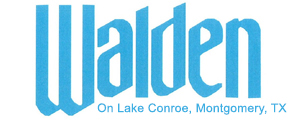Montgomery County Municipal Utility District No. 8
Irrigation Suggestions – Part 2 – Economic Consideration
How You May Save Yourself Money and Reduce Water for Irrigation
Economic Considerations of Saving Water – Part 2
Mud 8 uses a progressive rate structure. Using 2008 rate structure, the more water you use, the more expensive it becomes per 1,000 gallons up to a maximum amount of $1.75 per 1,000 gallons. Starting in 2009, we should expect incremental rates to increase about $1.00/1,000 gallons as a result of the initial fee imposed by LSGCD. In 2015, we should expect this rate structure to incrementally increase another
$0.50 to $0.75 per 1,000 gallons.
In 2009 the maximum charge for 30,000 gallons should approach $ 2.86/1,000 gallons or slightly less than double 2008 cost. In 2015, the charge should be about $ 3.30/ 1,000 gallons and continue increasing through 2060 where it may be about $10.25/ 1,000 gallons, including escalation in cost of water production.
Using 2006 water consumption numbers, the annual average water consumption, per meter, was 13,700 gallons per month or 164,600 gallons per year. Examining peak irrigation months of July, August and September, average meter consumption was approximately 21,000 gallons per month. This is an average and we have meters recording from 10,000 to over 300,000 gallons per month during this period.
At 30,000 gallons per month, water only cost an average of $47 per meter (2,600 meters in 2006) at 2008 rates, $76 using the projected 2009 rate, $86 by 2015 and more from 2015 forward.
If we can find a reasonable way to cut back on water use, still irrigate green space and satisfy the LSGCD mandate of 30 % reduction by 2015, it’s clearly a win-win solution.
How can we accomplish this goal?
- Cut back watering until your grass and plants really need water and then water deeply without losing 50 % of your water to
- Water at night or early mornings when it’s cool with less wind to reduce
- Change out as many spray head irrigation sprinklers as possible to drip or soaker hose
- Install rain sensor cutoff units to prevent your sprinkler system from operating during or within three to five days after a rainfall.
- Don’t leave your hose running unattended. Purchase a battery operated or spring operated hose cutoff after a programmed
Some specific suggestions are include in articles to follow. Thanks for your interest and consideration.
MUD 8 Directors and Operating Staff.
The data provided in this series of articles is believed to be accurate; however, MUD 8 & MUD 9 assume no responsibility for guaranteeing savings or cost projected herein. It is the responsibility of the customer to implement changes to save water and associated cost.
MCMUD_IRRIGATION_ECONOMIC CONSIDERATIONS – PART 2_072508.doc 1
